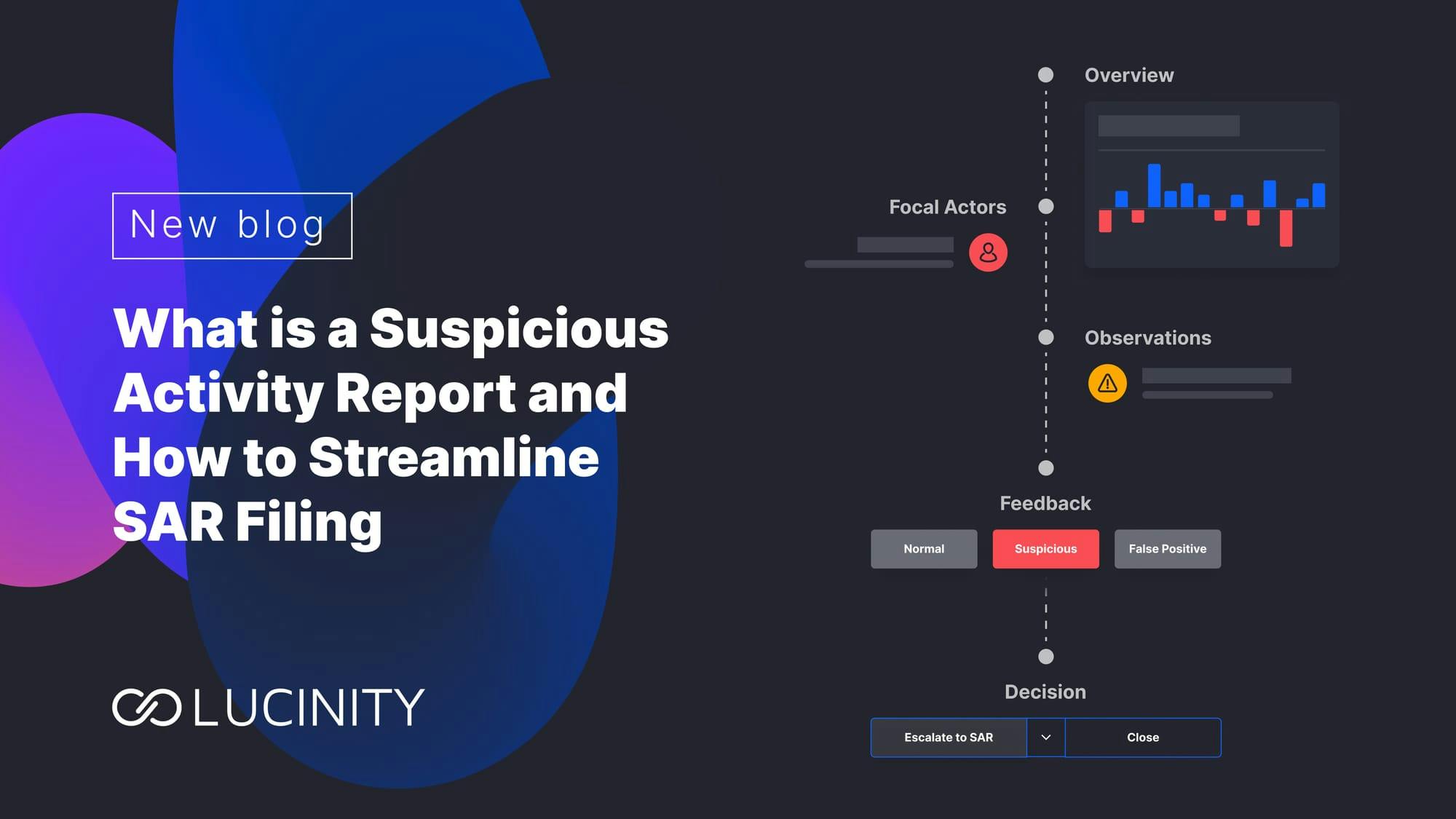AI-powered, human-centered: explaining 'Human AI'
In this first post of a three-part blog series, we clear the air about AI, and explain Human AI: what it means, how it’s similar and why it’s different. And how it’ll help you fight financial crime better.
We’re proud of many aspects of Lucinity’s AML solution. But if there's a single question we get asked most regularly, it's definitely about artificial intelligence.
This is not surprising: our ‘Human AI’ ethos is at the center of everything we do. It enables us and, consequently, you, to unlock real productivity gains and fill our purpose-built UI with data visualizations that are intuitive and explainable to help your workflow.
In this three-part blog series, I want to clear the air about AI, and explain the concept of Human AI: what it means, how it’s similar and why it’s different. And how it’ll help you fight financial crime better.
The rise of AI
In an industry survey, over 80% of C-level executives said that AI is important to their company’s future. In the financial industry, AI is seen as an asset in a number of areas, from algorithmic trading to fraud detection. The potential impact of AI-driven solutions is huge.
However, we learned that just saying 'AI' can cause confusion and alarm. There are many misconceptions about AI. What’s worse, deceptive marketing practices actively reinforce them. These may gain sales departments short-term wins, but will flame out and cause long-term problems for the business. This, in turn, makes the subsequent discussions about AI start off negative. Once bitten, twice shy, as the saying goes.
Our aim at Lucinity is to prove that AI is not a looming threat or a mysterious, unknowable power. Instead, we think of AI as a technology to be used: for a purpose, by humans. That’s why we say ‘Human AI’ instead, a concept we developed to make sure we use AI responsibly and positively.
What *is* Human AI?
To sum up in one sentence: "Human AI is taking human ingenuity and creativity, and empowering it with the data processing and analysis prowess of machines."

Human AI is still an AI: it uses math and data science that machines can understand. But it is designed to never lose sight of the need for interpretable, explainable, and intuitive display of results. This way, the entire process of using Human AI is guided and punctuated by human expertise capitalizing on the enormous power of machines.
We firmly believe in the synergies between humans and machines, and we work to elevate the capabilities of professionals by pairing them with technology that complements, rather than replaces, their strengths. We are championing an approach that leverages the best of both worlds and unlocks more potential than each individual component in isolation.

Using ML against ML
As in: deploying machine learning to fight money laundering.
In the next article of this series, I’ll go into more detail about the specific technologies that Human AI is built on. The machine learning in Human AI is utilized to empower human expertise, and that’s why it’s especially suited to shoulder the new workloads that financial institutions, and their compliance teams in particular, are burdened with.
And in the third (and final) article, I’ll be showing the power of Human AI in action. While the concept of Human AI can be applied to most use cases where artificial intelligence is deployed, using it in AML compliance offers a specific benefit.
Let me know what you think about the opportunities of AI, how you think Human AI could assist your business to do AML compliance better, or if you have any questions!


